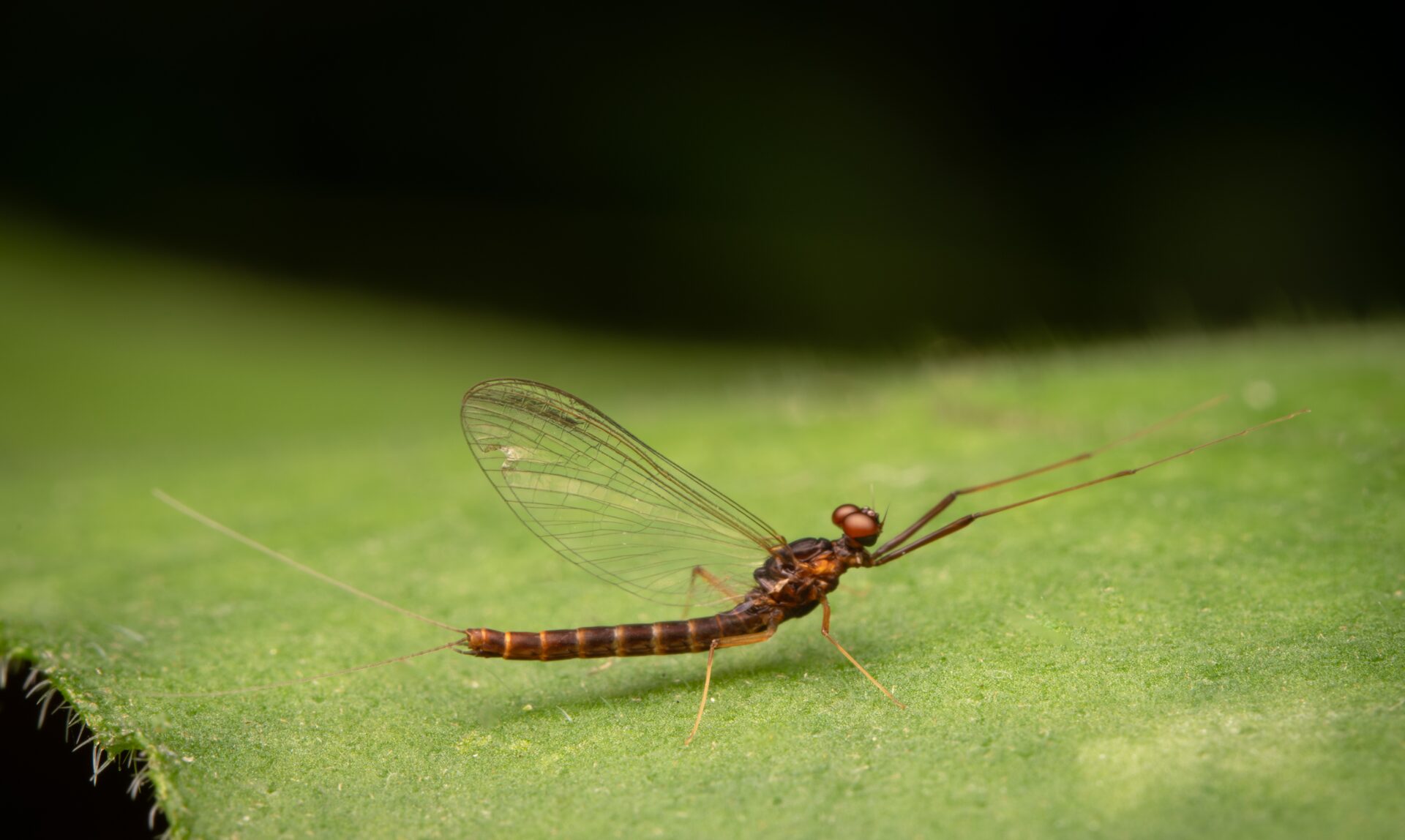Mayflies, gentle indicators of water quality


In freshwater ecosystems, mayflies are the most important component of the macrozoobenthos (freshwater macroinvertebrates). This order of aquatic insects comprises about 40 families with 440 genera and 3,330 described species. To date, 85 species have been recorded in the Republic of Croatia. As far as their life cycle is concerned, mayflies undergo incomplete metamorphosis (“exopterygota”), as they do not have a pupal stage; instead, the adult (imago) develops directly from the larva. They have a further transitional stage – the subimago. The larvae resemble the adults and grow larger with each moult. After the last moult, which can take place 20 to 30 times, they develop wings and sexual organs.
Mayflies are used in water quality assessments because they respond well to various environmental stresses. Different species vary in their ability to tolerate ecological disturbances, from habitat changes to global climate change, making them excellent indicators of water quality.
Mayflies are good biological indicators because they fulfil the criteria of easy identification, are widespread and abundant, and are easy to catch. They also have low genetic and ecological variability, are large, less mobile and have a long life cycle. As such, they offer a wide range of applications in laboratory studies.
The use of DNA barcoding methods is expected to provide considerable support in the identification of species. With this method, a species can be reliably identified using short, standardised DNA segments. Each species has its own barcode, just as each individual has its own fingerprint.
For these reasons, the biologists at the Josip Juraj Strossmayer Water Institute are actively contributing to international research into these excellent indicators of the quality of our freshwater ecosystems. At the recent 17th International Conference on Mayflies (Ephemeroptera), Dr Lidija Kladarić presented the research of a group of authors: “Distribution, habitat and genetic diversity of Ametropus fragilis Albarda, 1878 (Ephemeroptera) in Croatia” This species is very rare and fragile. Perhaps it is so named because “fragilis” comes from Latin and means fragile. However, the species has been declared extinct in three countries according to IUCN criteria, namely Bulgaria, the Czech Republic and the Netherlands. Interestingly, observations of the species A. fragilis have become more frequent in Croatia after stricter regulations for sand mining in river beds were enacted.